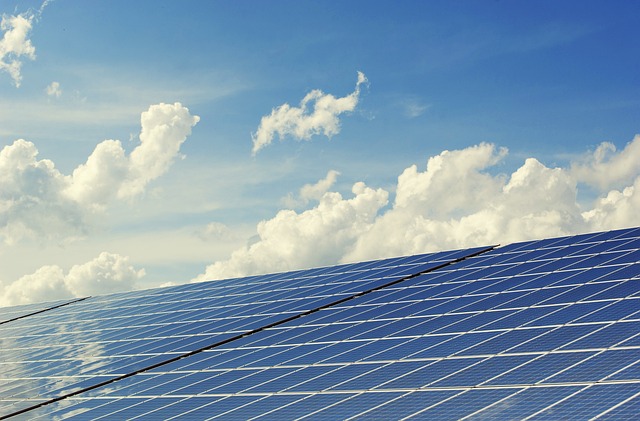“Maximize Savings: Harness Solar Performance Monitoring to Slash Energy Costs.”
Solar performance monitoring plays a crucial role in optimizing the efficiency and effectiveness of solar energy systems, ultimately leading to significant reductions in energy costs. By continuously tracking the performance of solar panels and associated equipment, monitoring systems can identify inefficiencies, detect faults, and ensure that the solar installation operates at peak performance. This proactive approach not only maximizes energy production but also extends the lifespan of the equipment, reducing maintenance costs and enhancing return on investment. As energy prices fluctuate and the demand for renewable energy sources increases, effective solar performance monitoring becomes essential for both residential and commercial users seeking to lower their energy expenses and contribute to a more sustainable future.
Importance Of Solar Performance Monitoring In Cost Reduction
In the quest for sustainable energy solutions, solar power has emerged as a leading contender, offering a clean and renewable source of electricity. However, the effectiveness of solar energy systems is not solely determined by their installation; it is significantly influenced by how well their performance is monitored. Solar performance monitoring plays a crucial role in reducing energy costs, ensuring that solar systems operate at their optimal efficiency. By continuously tracking the performance of solar panels, stakeholders can identify inefficiencies, address maintenance issues, and ultimately enhance the return on investment.
To begin with, effective solar performance monitoring allows for real-time data collection regarding energy production. This data is invaluable, as it provides insights into how much energy a solar system generates compared to its expected output. When discrepancies arise, such as lower-than-anticipated energy production, it signals the need for further investigation. This proactive approach enables system owners to pinpoint issues such as shading, dirt accumulation, or equipment malfunctions that could hinder performance. By addressing these problems promptly, users can maximize energy production and, consequently, reduce their reliance on grid electricity, leading to significant cost savings.
Moreover, solar performance monitoring systems often include advanced analytics that can predict future performance trends based on historical data. This predictive capability allows users to make informed decisions regarding energy consumption and storage. For instance, if a monitoring system indicates that energy production is likely to decrease during certain months due to seasonal changes, users can adjust their energy usage patterns accordingly. By aligning energy consumption with peak production times, users can further decrease their energy costs, optimizing the financial benefits of their solar investment.
In addition to enhancing operational efficiency, solar performance monitoring also plays a vital role in ensuring compliance with warranties and service agreements. Many solar panel manufacturers offer performance guarantees, which stipulate that the system will produce a certain amount of energy over its lifespan. By regularly monitoring performance, system owners can provide documented evidence of any underperformance, which can be crucial for warranty claims. This not only protects the investment but also ensures that any necessary repairs or replacements are conducted in a timely manner, preventing further losses in energy production and associated costs.
Furthermore, as the solar industry continues to evolve, the integration of smart technologies into solar performance monitoring systems is becoming increasingly prevalent. These technologies enable remote monitoring and automated alerts, allowing users to receive immediate notifications about performance issues. This immediacy is essential in minimizing downtime and ensuring that any disruptions to energy production are addressed swiftly. Consequently, the financial implications of prolonged inefficiencies are mitigated, reinforcing the importance of continuous monitoring in cost reduction.
In conclusion, the significance of solar performance monitoring in reducing energy costs cannot be overstated. By providing real-time data, predictive analytics, and ensuring compliance with warranties, monitoring systems empower users to optimize their solar investments. As the demand for renewable energy sources continues to grow, the role of performance monitoring will only become more critical. By embracing these technologies, stakeholders can not only enhance the efficiency of their solar systems but also contribute to a more sustainable energy future while enjoying substantial financial savings. Ultimately, effective solar performance monitoring is not just a tool for maintaining system efficiency; it is a strategic approach to maximizing the economic benefits of solar energy.
Key Metrics To Track For Optimal Solar Performance

In the quest for sustainable energy solutions, solar performance monitoring has emerged as a critical component in maximizing the efficiency and cost-effectiveness of solar energy systems. To truly harness the potential of solar power, it is essential to track key metrics that provide insights into system performance. By focusing on these metrics, homeowners and businesses can make informed decisions that lead to significant reductions in energy costs.
One of the primary metrics to monitor is energy production, which measures the amount of electricity generated by the solar panels over a specific period. This data is crucial because it allows users to compare actual production against expected output based on factors such as system size, location, and weather conditions. By analyzing energy production, users can identify any discrepancies that may indicate issues with the solar array, such as shading, dirt accumulation, or equipment malfunctions. Consequently, timely interventions can be made to rectify these problems, ensuring that the system operates at peak efficiency.
Another vital metric is the performance ratio (PR), which is a measure of the actual energy output of a solar system compared to its theoretical output under ideal conditions. The PR provides a clear indication of how well the system is performing relative to its potential. A high performance ratio suggests that the system is functioning optimally, while a low ratio may signal inefficiencies that need to be addressed. By regularly monitoring the performance ratio, users can gain insights into the overall health of their solar installation and take proactive steps to enhance its performance.
In addition to energy production and performance ratio, monitoring the inverter efficiency is essential. The inverter is a critical component of any solar energy system, as it converts the direct current (DC) generated by the solar panels into alternating current (AC) for use in homes and businesses. Tracking inverter efficiency helps users understand how effectively the inverter is converting energy. If the efficiency drops significantly, it may indicate a need for maintenance or replacement, which can prevent energy losses and ensure that the system continues to operate efficiently.
Furthermore, it is important to keep an eye on system downtime, which refers to the periods when the solar system is not generating electricity due to maintenance, repairs, or other issues. By tracking downtime, users can assess the reliability of their solar installation and identify patterns that may suggest underlying problems. Reducing downtime not only maximizes energy production but also contributes to lower energy costs over time.
Lastly, monitoring environmental factors such as temperature, sunlight intensity, and weather conditions can provide valuable context for understanding solar performance. For instance, high temperatures can affect the efficiency of solar panels, while cloudy days can lead to reduced energy production. By correlating environmental data with energy output, users can better anticipate performance fluctuations and make informed decisions about energy usage and system maintenance.
In conclusion, effective solar performance monitoring hinges on tracking key metrics such as energy production, performance ratio, inverter efficiency, system downtime, and environmental factors. By diligently monitoring these metrics, users can identify inefficiencies, optimize system performance, and ultimately reduce energy costs. As the demand for renewable energy continues to grow, the importance of solar performance monitoring will only increase, making it an indispensable tool for anyone looking to maximize the benefits of solar energy.
How Real-Time Data Analysis Lowers Energy Expenses
In the quest for sustainable energy solutions, solar performance monitoring has emerged as a pivotal tool in reducing energy costs. By leveraging real-time data analysis, homeowners and businesses can gain invaluable insights into their solar energy systems, ultimately leading to significant financial savings. The ability to track energy production and consumption in real time allows users to make informed decisions that optimize their solar investments.
To begin with, real-time data analysis provides a comprehensive view of how much energy a solar system is generating at any given moment. This immediate feedback is crucial, as it enables users to identify patterns in energy production based on factors such as weather conditions, time of day, and seasonal changes. For instance, during peak sunlight hours, users can see the maximum output of their solar panels, which can inform decisions about energy usage. By aligning energy-intensive activities, such as running appliances or charging electric vehicles, with periods of high solar production, users can minimize their reliance on grid electricity, thereby reducing their overall energy expenses.
Moreover, real-time monitoring systems often come equipped with alerts and notifications that inform users of any performance issues or inefficiencies. For example, if a solar panel is underperforming due to dirt accumulation or shading from nearby trees, the monitoring system can send an alert to the owner. This proactive approach allows for timely maintenance and repairs, ensuring that the solar system operates at peak efficiency. By addressing issues promptly, users can avoid the costly consequences of prolonged inefficiencies, which can significantly impact energy savings over time.
In addition to monitoring energy production, real-time data analysis also facilitates a better understanding of energy consumption patterns. By analyzing usage data, users can identify trends and peak consumption times, which can inform strategies for reducing energy costs. For instance, if a household notices that energy consumption spikes during certain hours, they can adjust their habits or invest in energy-efficient appliances to mitigate these costs. Furthermore, this data can be invaluable when considering the integration of battery storage systems. By understanding when energy is most needed, users can optimize their battery usage, storing excess solar energy generated during the day for use during peak demand times, thus further reducing reliance on grid electricity.
Transitioning to a broader perspective, the implications of real-time data analysis extend beyond individual households and businesses. As more users adopt solar technology and utilize performance monitoring, the cumulative effect can lead to a more stable and efficient energy grid. By reducing peak demand on the grid through optimized solar usage, communities can lower overall energy costs and contribute to a more sustainable energy future. This collective effort not only benefits individual users but also enhances the resilience of the energy infrastructure.
In conclusion, the role of solar performance monitoring in reducing energy costs cannot be overstated. Through real-time data analysis, users gain critical insights into both energy production and consumption, enabling them to make informed decisions that optimize their solar investments. By addressing performance issues promptly and understanding consumption patterns, users can significantly lower their energy expenses. As the adoption of solar technology continues to grow, the benefits of real-time monitoring will play an increasingly vital role in shaping a more efficient and sustainable energy landscape. Ultimately, the integration of advanced monitoring systems represents a significant step toward achieving energy independence and cost savings for all.
Case Studies: Successful Cost Savings Through Solar Monitoring
In recent years, the adoption of solar energy has surged, driven by the need for sustainable energy solutions and the desire to reduce energy costs. However, the effectiveness of solar energy systems can vary significantly based on a multitude of factors, including location, installation quality, and ongoing maintenance. This is where solar performance monitoring plays a crucial role. By providing real-time data on energy production and system efficiency, solar monitoring systems enable users to identify issues promptly and optimize their solar investments. Several case studies illustrate how effective solar performance monitoring has led to substantial cost savings for various organizations and homeowners alike.
One notable example comes from a large commercial facility that installed a solar array to offset its energy consumption. Initially, the facility experienced a drop in expected energy production, which raised concerns about the return on investment. By implementing a comprehensive solar performance monitoring system, the facility’s management was able to pinpoint the exact cause of the inefficiencies. They discovered that a significant portion of the solar panels was shaded by nearby trees, which had not been accounted for during the installation. Armed with this information, the facility took corrective action by trimming the trees and optimizing the panel layout. As a result, energy production increased by over 30%, leading to a significant reduction in energy costs and a much quicker payback period for the solar investment.
Another compelling case involves a residential homeowner who installed a solar system to reduce monthly electricity bills. Initially, the homeowner was pleased with the energy savings; however, after a few months, the energy production began to decline unexpectedly. By utilizing a solar performance monitoring platform, the homeowner was able to track the system’s output and identify a malfunctioning inverter that was underperforming. The monitoring system provided alerts and detailed performance reports, allowing the homeowner to act swiftly and replace the faulty component. This proactive approach not only restored the system’s efficiency but also ensured that the homeowner continued to benefit from significant energy savings, ultimately leading to a reduction in their overall energy costs.
In the public sector, a school district implemented solar performance monitoring across its campuses to maximize the benefits of its solar installations. By analyzing the data collected from each site, the district was able to identify discrepancies in energy production among different schools. This analysis revealed that some installations were not operating at peak efficiency due to outdated equipment and lack of maintenance. By addressing these issues and investing in upgrades where necessary, the school district improved overall energy production by 25%. This increase translated into substantial cost savings, allowing the district to allocate funds to other educational initiatives.
These case studies underscore the importance of solar performance monitoring in realizing the full potential of solar energy systems. By providing actionable insights and facilitating timely interventions, monitoring systems empower users to optimize their solar investments and achieve significant cost savings. As the demand for renewable energy continues to grow, the integration of advanced monitoring technologies will be essential in ensuring that solar systems operate efficiently and effectively. Ultimately, the success stories of these organizations and individuals serve as a testament to the transformative impact of solar performance monitoring, highlighting its role in reducing energy costs and promoting sustainable energy practices.
Q&A
1. **Question:** How does solar performance monitoring help identify inefficiencies in a solar energy system?
**Answer:** Solar performance monitoring tracks the energy output and performance metrics of a solar system, allowing for the identification of inefficiencies such as shading, equipment malfunctions, or suboptimal orientation, which can lead to reduced energy production.
2. **Question:** In what ways can timely maintenance, informed by performance monitoring, reduce energy costs?
**Answer:** By providing real-time data on system performance, monitoring enables prompt maintenance and repairs, preventing prolonged periods of low efficiency and ensuring the system operates at optimal levels, thus reducing overall energy costs.
3. **Question:** How does performance monitoring contribute to maximizing the return on investment (ROI) for solar energy systems?
**Answer:** Performance monitoring ensures that solar systems are functioning efficiently, maximizing energy production and savings on utility bills, which enhances the ROI by ensuring that the system generates the expected financial benefits over its lifespan.
4. **Question:** What role does data analysis from solar performance monitoring play in energy cost forecasting?
**Answer:** Data analysis from performance monitoring provides insights into energy production trends and system performance, allowing for more accurate forecasting of energy costs and savings, which helps in budgeting and financial planning for both residential and commercial users.
Conclusion
Solar performance monitoring plays a crucial role in reducing energy costs by ensuring optimal system efficiency, identifying maintenance needs, and enabling data-driven decision-making. By continuously tracking the performance of solar energy systems, users can detect issues early, optimize energy production, and ultimately lower operational costs. This proactive approach not only maximizes the return on investment for solar installations but also contributes to overall energy savings, making solar energy a more economically viable option for consumers and businesses alike.




